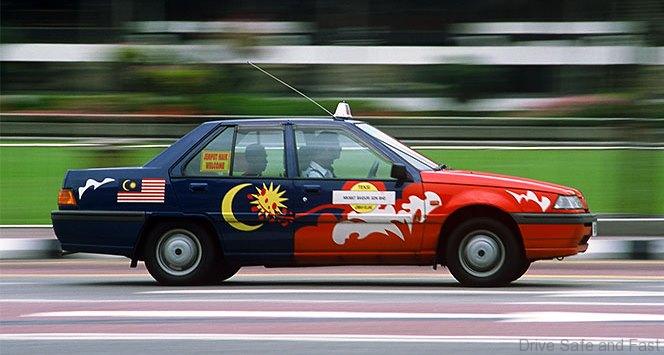From the invention of the wheel to the horse-drawn carriage, and from the Model T to the cars of today, human history has been shaped by innovations in transportation. Today, the transportation landscape of the past is colliding with radical technology innovations that may once again reshape how the world moves.
A survey conducted across Asia Pacific on behalf of Ford Motor Company found that consumers are driving these changes as technology gives them new and easier ways to plan their journeys, whether using private or public transportation – or a combination of both.
Regionally, one in four respondents of the survey said they use a ride-hailing app more than once a week to get around. Respondents in China and India were the most likely to use ride-hailing apps (both 28 percent). On the other end of the spectrum were Australia and New Zealand, where respondents reported low ride-hailing app usage. Only five percent of Australians and three percent of New Zealanders said they regularly use apps to book a car.

Across the region, use of these apps is on the rise, with 32 percent of respondents reporting increased use over a year earlier. India (42 percent) and China (33 percent) were the main drivers of the upward trend, with New Zealand (seven percent), Taiwan (nine percent) and Australia (12 percent) reporting the lowest increase in use.
Car-sharing programmes are also becoming more popular, with one in five respondents in the region saying their participation in shared-car platforms had increased from a year earlier. Indian respondents were the most likely to report higher use of car sharing, at 33 percent, followed by China (19 percent) and Malaysia (16 percent).
Malaysian survey responses showed the dominance of the private car in Malaysia’s transportation landscape: 76 percent said they travel by car regularly, meaning, more than once a week. Regular use of all transportation modes are broken down as follows:
- Private car: 76 percent of respondents
- Subway, tram or train: 26 percent
- Bus: 23 percent
- Electric scooter or motorbike: 14 percent
- Taxi: 12 percent
- Car-sharing programs: 12 percent
- Ride-hailing apps: nine percent
- Motorcycle taxi: three percent
The popularity of cars in Malaysia is continuing to increase. Private cars had the highest reported increased in usage of any mode of transport, with 47 percent of respondents saying they use private cars more than they did a year ago.
Although reported use of technology-enabled transportation modes – car-sharing programmes and taxi-hailing mobile apps – was relatively low compared with other markets in Asia Pacific, both modes are becoming more popular. Car-sharing programmes and ride-hailing apps both saw a 16 percent rise in usage compared with a year earlier.
Of transportation modes on the decline, taxis saw the largest reported decrease in usage, with 26 percent of respondents saying they used taxis less compared to a year earlier. Taxis were followed by buses, which saw a 24 percent decrease in use, and subways, trams or trains, which 15 percent of respondents said they used less frequently.
Malaysians are less likely to take more than one mode of transportation in a single trip compared with other markets in Asia Pacific. Forty-one percent of respondents say they never or rarely use multi-modal transportation, and only one in four say they do so every day.

The motivations behind Ford Smart Mobility are four global megatrends that are reshaping the world: explosive population growth, an expanding middle class, air quality and public health concerns, and changing customer attitudes and priorities.
Finding solutions for this diverse but interconnected set of challenges requires a wide range of initiatives. As people rethink what it means to own a car in an increasingly crowded world, Ford is investigating car-sharing programmes around the globe, including undertaking a research project in Bangalore, India.

For the Bangalore experiment, Ford partnered with ZoomCar to explore car-sharing in small communities like neighbourhoods, families or workplaces. Data collected by specially equipped Ford EcoSports will be used to analyse driver behaviour and information about how the vehicle was used. This will help to develop new models for vehicle scheduling and ownership management within car-sharing platforms.
Ford Smart Mobility encompasses innovations that are already available in Ford vehicles around the world – including Ford’s in-car connectivity system, SYNC, and semi-autonomous features such as Adaptive Cruise Control – as well as long-term research projects like Ford’s fully autonomous vehicle programme. By the end of this year, Ford will have the largest fleet of autonomous vehicles of any auto manufacturer, with 30 self-driving vehicles being tested across different climates in the United States. Recent tests required Ford’s autonomous vehicles to operate in the dark without the use of headlights, and subjected them to snowy conditions in an industry first.

Ford also recently announced FordPass, a platform that reimagines the relationship between automaker and consumer. FordPass is designed to give users access to mobility services through the FordPass Marketplace, pay for such services with FordPay, interact with personal mobility assistants night or day with FordGuides, and accrue membership rewards.
The FordPass platform also includes FordHubs, storefronts where consumers can learn about Ford’s latest mobility innovations. Ford has been a leader in in-car connectivity since 2007, when SYNC first debuted in Ford vehicles. The first generation offered simple voice controls to make and receive phone calls, and to control features like music and the radio – all while helping drivers to keep their hands on the wheel and eyes on the road. The latest generation, SYNC 3, delivers even more intuitive voice control, as well as integration with SYNC AppLink, which lets drivers use voice commands to control smartphone apps from the driver’s seat.


